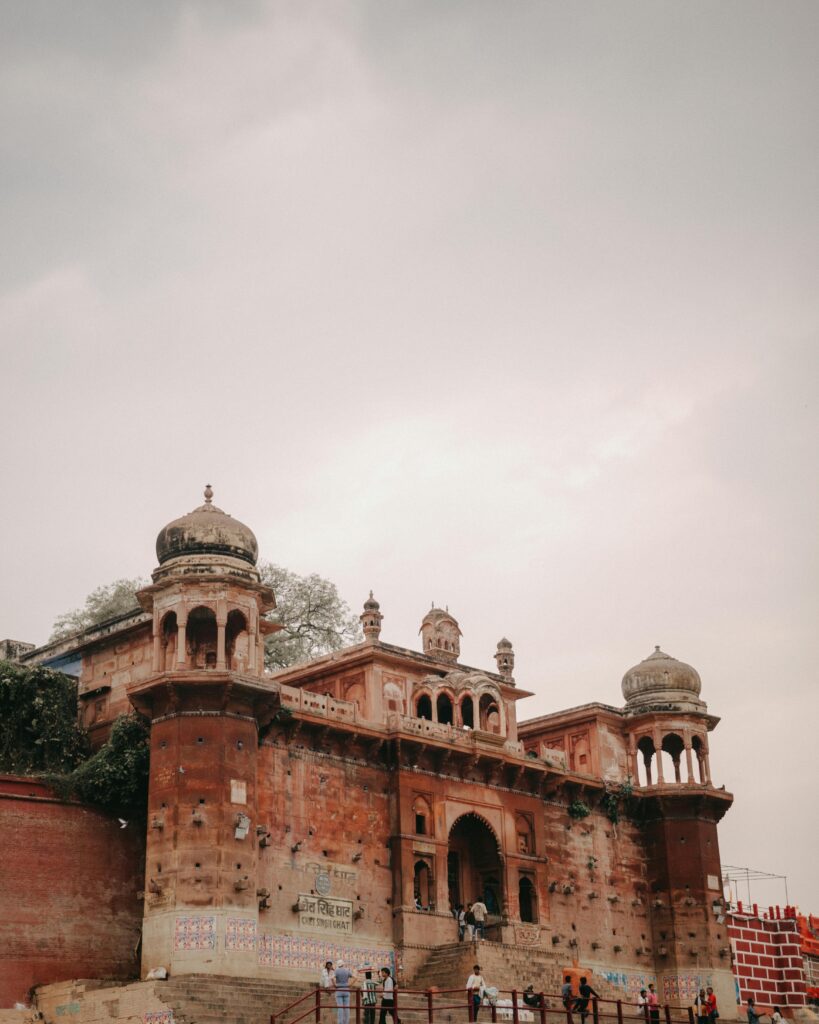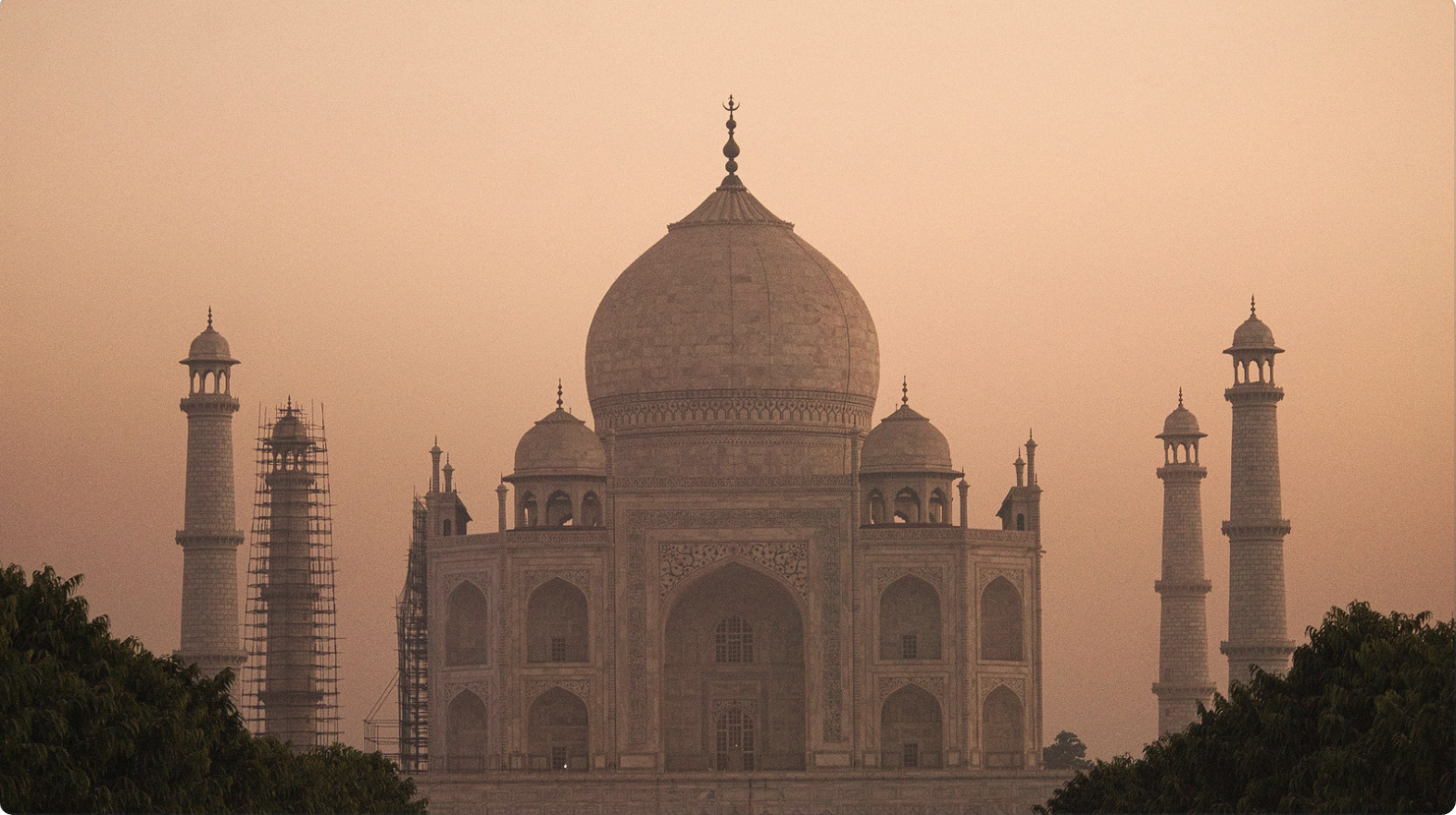From the ancient stone temples of Southern India to the grand palaces built during the Mughal era, and from colonial-era buildings to modern skyscrapers, Indian architecture reflects the country’s diverse cultural, religious, and historical heritage. Each period of architectural development is deeply intertwined with the prevailing philosophies, spiritual beliefs, and socio-political conditions of the time, creating a fusion of art and functionality.
Architecture in India has always been more than just the construction of buildings; it’s a reflection of the country’s spiritual and cultural values. Temples, forts, palaces, and homes were all designed not just for physical use, but to embody the essence of religious beliefs, cosmology, and the life experiences of the people. As a result, Indian architecture is a mirror of its religious traditions (like Hinduism, Buddhism, and Islam), colonial history, and the modernity that followed independence.
This article will explore the evolution of Indian architecture, focusing on three significant phases: the grandeur and symbolism of ancient temples, the influence of colonial powers on architectural design, and the emergence of modernist architecture following India’s independence. By examining these periods, we’ll see how each era shaped the architectural identity of India and how it has continued to evolve into the 21st century.
- Ancient Indian architecture: Temples and monuments
- Colonial legacy: European influence on Indian architecture
- The rise of modernism: Post-Independence architecture
- Contemporary Indian architecture: Innovation and sustainability
- Challenges and opportunities in Indian architecture
- Conclusion
Ancient Indian architecture: Temples and monuments
Temples were central to the life of ancient India, serving as both spiritual and physical hubs of communities. They were not merely places of worship but represented the divine presence on Earth. Architecture, especially in temples, was meticulously planned to express a connection to the gods and the cosmos. Sacred geometry and symbolism were deeply embedded in the design, making each temple a manifestation of spiritual beliefs. Temples were also centers of learning, art, and culture, where scholars and artisans gathered to study and create.
Ancient Indian temples are distinguished by two major architectural styles: Nagara (North Indian) and Dravidian (South Indian). Nagara style temples, with their towering spires (Shikhara) and intricate stone carvings, can be seen in places like the Sun Temple in Konark and the Kailasa Temple in Ellora. These temples are characterized by their symmetrical structures, with a central tower rising above a sanctum housing the idol of the deity. In contrast, Dravidian style temples, which are predominantly found in South India, are noted for their pyramid-like towers (Vimana) and massive, ornate gateways (Gopurams), seen in iconic structures like the Meenakshi Temple in Madurai.
Some of the most stunning examples of ancient Indian temple architecture include the Kailasa Temple in Ellora, which is a single monolithic structure carved from solid rock, and the Sun Temple in Konark, which takes the shape of a chariot drawn by horses, representing the dynamism of the sun god. The Meenakshi Temple in Madurai, with its intricate carvings and towering gopurams, showcases the Dravidian style’s emphasis on detailed ornamentation and grandeur.
The construction of these grand temples was an extraordinary feat of engineering. The ancient Indian builders demonstrated incredible skill in stone carving and construction, using simple tools to carve complex structures. Many temples were built in alignment with astronomical and celestial movements, showcasing the intersection of architecture and ancient Indian science. The precision involved in planning and executing these temples continues to be a subject of admiration.
Colonial legacy: European influence on Indian architecture
- The Arrival of European Architectural Styles
The arrival of European powers, particularly the Portuguese, Dutch, French, and British, in India in the 16th century brought new architectural styles to the subcontinent. These influences can be seen in buildings that blend traditional Indian elements with European forms. The British colonial presence played the most significant role in shaping modern Indian cities, where the fusion of Western classical architecture and local design traditions resulted in what is now known as Indo-Saracenic architecture.
- Key Examples of Colonial Architecture
Colonial buildings in India, such as the Victoria Memorial in Kolkata, the Gateway of India in Mumbai, and the India Gate in New Delhi, represent a fusion of Gothic, Romanesque, and Mughal styles. These monumental structures were designed not only to demonstrate British imperial power but also to blend in with local aesthetics. The Chhatrapati Shivaji Maharaj Terminus (formerly Victoria Terminus) in Mumbai is a striking example of Indo-Saracenic architecture, blending Victorian Gothic and Mughal elements.
- Urban Planning During British Rule
The British also had a significant influence on urban planning in India, particularly in the construction of wide boulevards, parks, and organized city layouts. The city of New Delhi, designed by British architect Edwin Lutyens, features spacious avenues, large public buildings, and grand administrative structures, exemplifying imperial architecture and Western ideals of order and symmetry. Similarly, cities like Mumbai and Chennai bear the imprint of colonial-era urban planning, with their mix of European-style government buildings, churches, and residential colonies.
The rise of modernism: Post-independence architecture

After India gained independence in 1947, the country sought to define itself through architecture that reflected its new identity. Modernism, with its focus on functionalism, simplicity, and the use of new materials, became the guiding architectural philosophy. Indian architects, influenced by international movements like Bauhaus and International Style, began creating buildings that broke away from the colonial past while incorporating traditional Indian elements in innovative ways.
Le Corbusier, one of the most influential modernist architects, played a pivotal role in shaping India’s post-independence architecture. He was commissioned to design the city of Chandigarh, a model city that blends modernist principles with regional styles. Similarly, Pierre Jeanneret worked alongside Le Corbusier to design functional, minimalistic buildings that are both modern and human-centered.
Architects like Charles Correa, B.V. Doshi, and Pierre Jeanneret brought a local flavor to modernist designs, creating iconic buildings that combined traditional elements with contemporary aesthetics.
While the international modernist style became dominant, many Indian architects incorporated elements of traditional Indian architecture, creating a unique synthesis. For example, buildings often used courtyards and open spaces to adapt to the hot Indian climate, and local materials like sandstone and terracotta were utilized in modern designs. One of the key examples of this fusion is the Indian Institute of Management (IIM) in Ahmedabad, designed by Louis Kahn, which blends modernist principles with the use of traditional Indian materials and open spaces suited to the Indian context.
Contemporary Indian architecture: Innovation and sustainability
In recent years, sustainability has become a key focus in Indian architecture, as the country faces rapid urbanization and environmental challenges. Contemporary Indian buildings increasingly incorporate energy-efficient designs, green roofs, solar panels, and rainwater harvesting systems. The emphasis is on using locally sourced materials, reducing energy consumption, and creating buildings that are environmentally responsible. The Bengaluru International Airport and Gurgaon’s DLF Cyber City are prime examples of integrating sustainable practices into urban design.
With the rise of smart cities, India is adopting cutting-edge technologies to improve urban living. Cities like New Delhi, Bengaluru, and Gurgaon are incorporating IoT-based infrastructure, data-driven urban planning, and smart building systems to create more efficient and livable spaces. These smart buildings are designed to reduce energy consumption, improve air quality, and make urban spaces safer and more accessible.
India’s modern architectural landscape includes iconic projects such as the Lotus Temple in Delhi, which blends modern geometry with traditional symbolic design, and the Statue of Unity in Gujarat, the world’s tallest statue, which combines engineering innovation with cultural symbolism. The Bengaluru International Airport is another example of India’s commitment to sustainability and modernism, with its innovative design and green building certifications.
Challenges and opportunities in Indian architecture
India’s rapid urbanization presents significant challenges for architects and urban planners. As millions of people move to cities, there is an urgent need for affordable housing, infrastructure, and sustainable urban development. Cities like Mumbai and Delhi struggle with overcrowding, pollution, and traffic congestion, making it essential for architects to design efficient, functional, and livable spaces.
While India embraces modernity, there is a continuous effort to maintain its architectural heritage. Architects are tasked with blending modern construction techniques with traditional aesthetics and sustainable solutions. The integration of historic elements, like courtyards, jharokhas (overhanging enclosed balcony), and local materials, helps ensure that new designs reflect India’s cultural identity.

India’s booming economy and rapid technological advancements provide opportunities for innovative and sustainable architectural solutions. The rise of smart cities, green architecture, and eco-friendly building materials offers a path forward for India’s cities to meet the demands of future generations while preserving the cultural significance of its architecture.
Conclusion
Indian architecture has evolved from the spiritual grandeur of ancient temples to the colonial legacies left by European powers, and into the modernist innovations that define the post-independence period. The country’s architectural landscape has always reflected its diverse culture, history, and evolving social needs.
Indian architecture is unique in its ability to blend the old with the new. While modernism and technology have shaped the current era, the enduring influence of traditional styles, colonial history, and cultural identity remains strong.
The future of architecture in India will likely be defined by innovation and sustainability, as cities grow and evolve. With the integration of smart technologies and eco-friendly designs, India has the opportunity to lead in creating sustainable and efficient urban spaces while maintaining its deep connection to the cultural and architectural traditions that have shaped its past.








